A pie chart is used to analyze the proportion of data. For example, you can use a pie chart to obtain the proportion of each portion of a category. This topic describes how to add data to a pie chart and configure the style of a pie chart.
Prerequisites
A dashboard is created. For more information, see Create a dashboard.
Overview
Scenarios
In most cases, a pie chart is used to display the distribution of dimension values based on the proportion of metrics. Data can be expressed by using various methods such as data highlights and data magnification.
Benefits
Easy-to-use interactive operations: A pie chart allows you to switch between metrics and configure filters.
Abundant data visualization: The chart type of a pie chart can be a pie and a ring. A pie chart allows you to configure parameters, such as Show Labels.
Various interactive options: You can add remarks or endnotes to metrics in pie charts. You can also add links to pie charts to interact with external systems.
Renderings Example

Configure a pie chart
On the Field tab, select dimensions and measures based on your business requirements.
In the Dimension list, double-click the area dimension. You can also drag this dimension to the Labels (Dim.) field.
In the measure list, double-click the shipping_cost, price, and order_amt measures. You can also drag these measures to the Central Angle (Mea.) field.
Click Update to update the pie chart.
The following figure shows the updated pie chart.
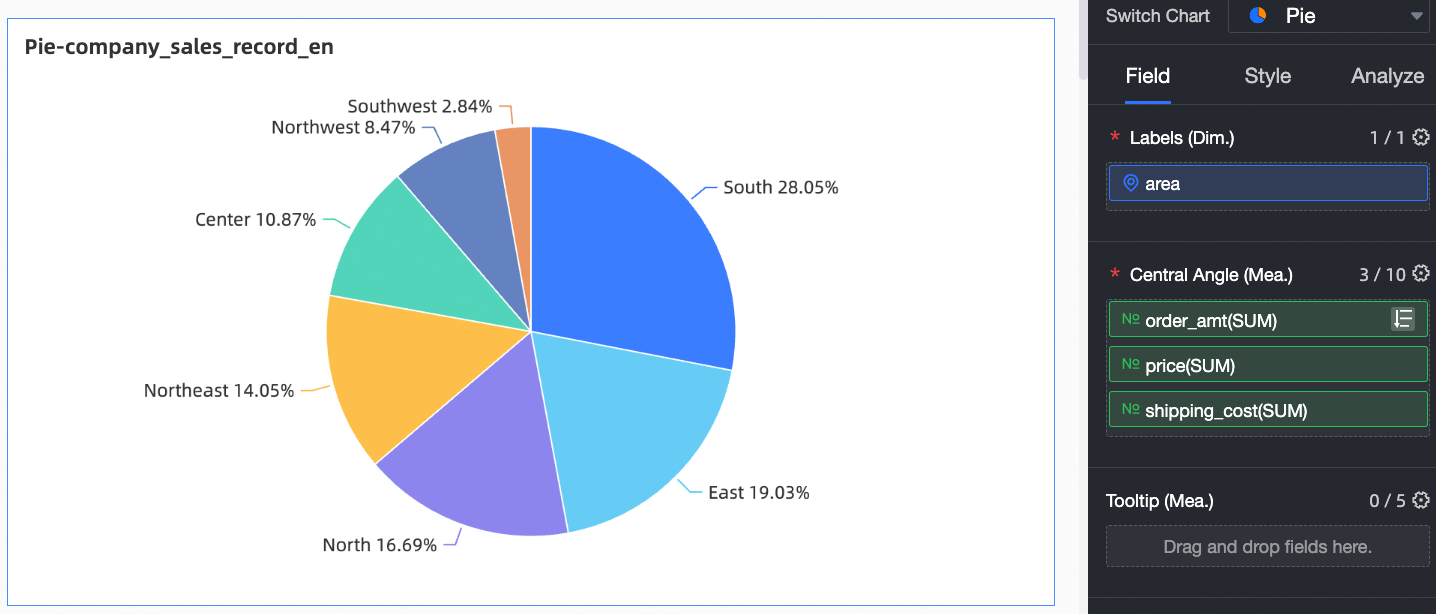
Configure the Auto Refresh parameter.
After you select Auto Refresh, the system automatically refreshes the pie chart at a specified time interval. For example, you select Auto Refresh, enter 5, and then select min. The system automatically refreshes chart data every 5 minutes.
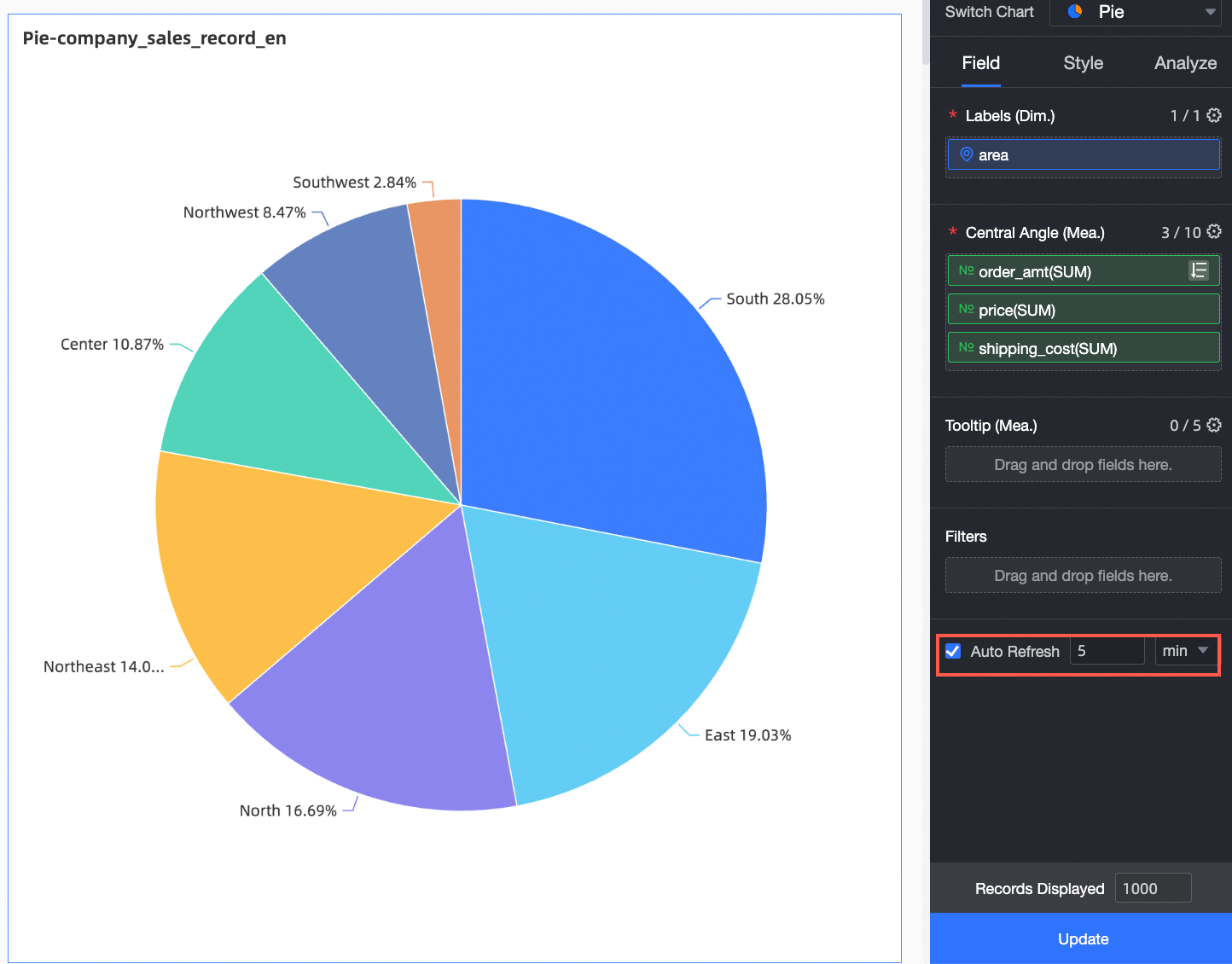
Configure the style of a pie chart
On the Data tab of the Chart Design page, you can configure the format of multiple fields at a time.
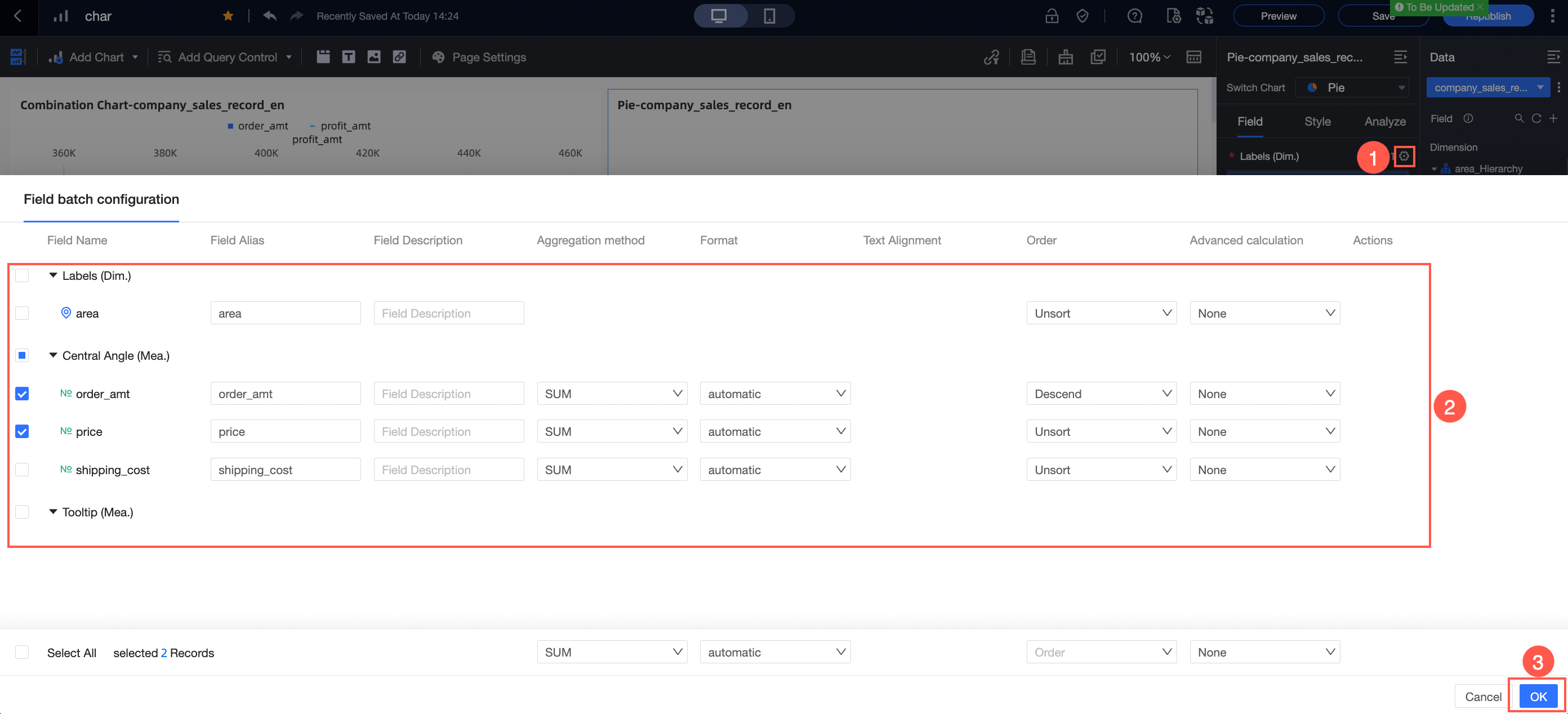
For more information about how to configure chart data, see Configure chart fields.
The following section describes how to configure the styles of an LBS heat map. For information about the common style settings of charts, see Configure the chart title.
You can enter a keyword in the search box at the top of the configuration section to search for configuration items. You can also click ![]() Expand /Collapse All Categories in the right-side chart.
Expand /Collapse All Categories in the right-side chart.
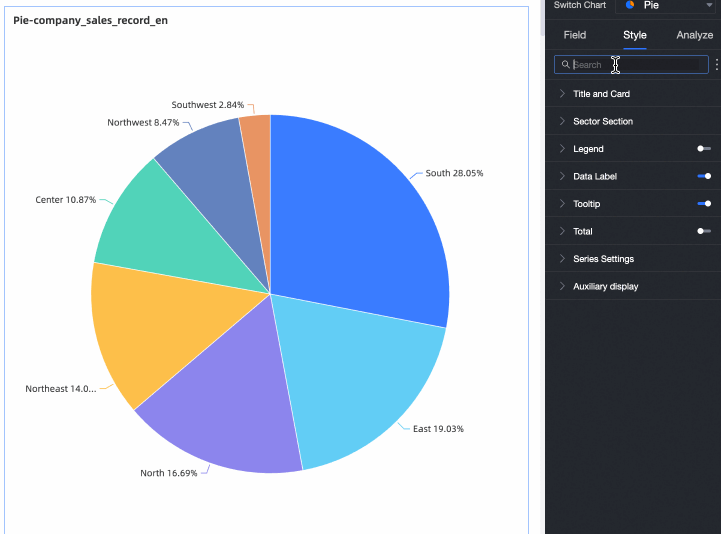
In the Sector section, configure the following parameters:
Configuration item
Configuration items example
Switch between visualization styles
You can select Pie or Ring.
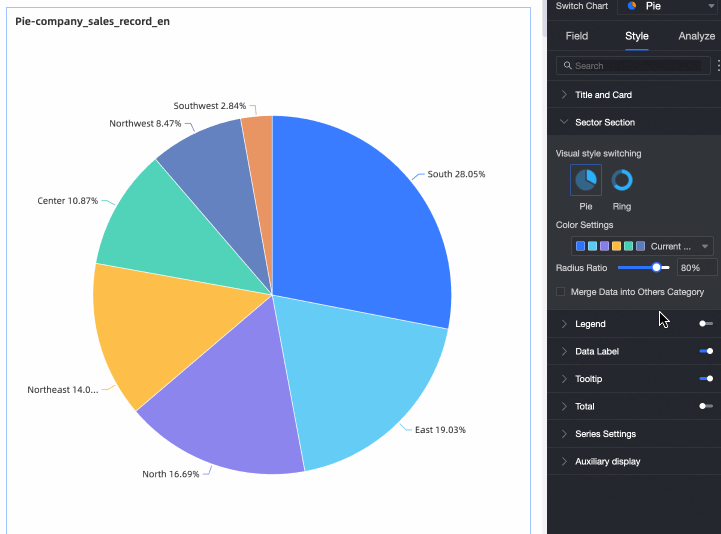
Color Settings
You can set the Color parameter for the pie chart.
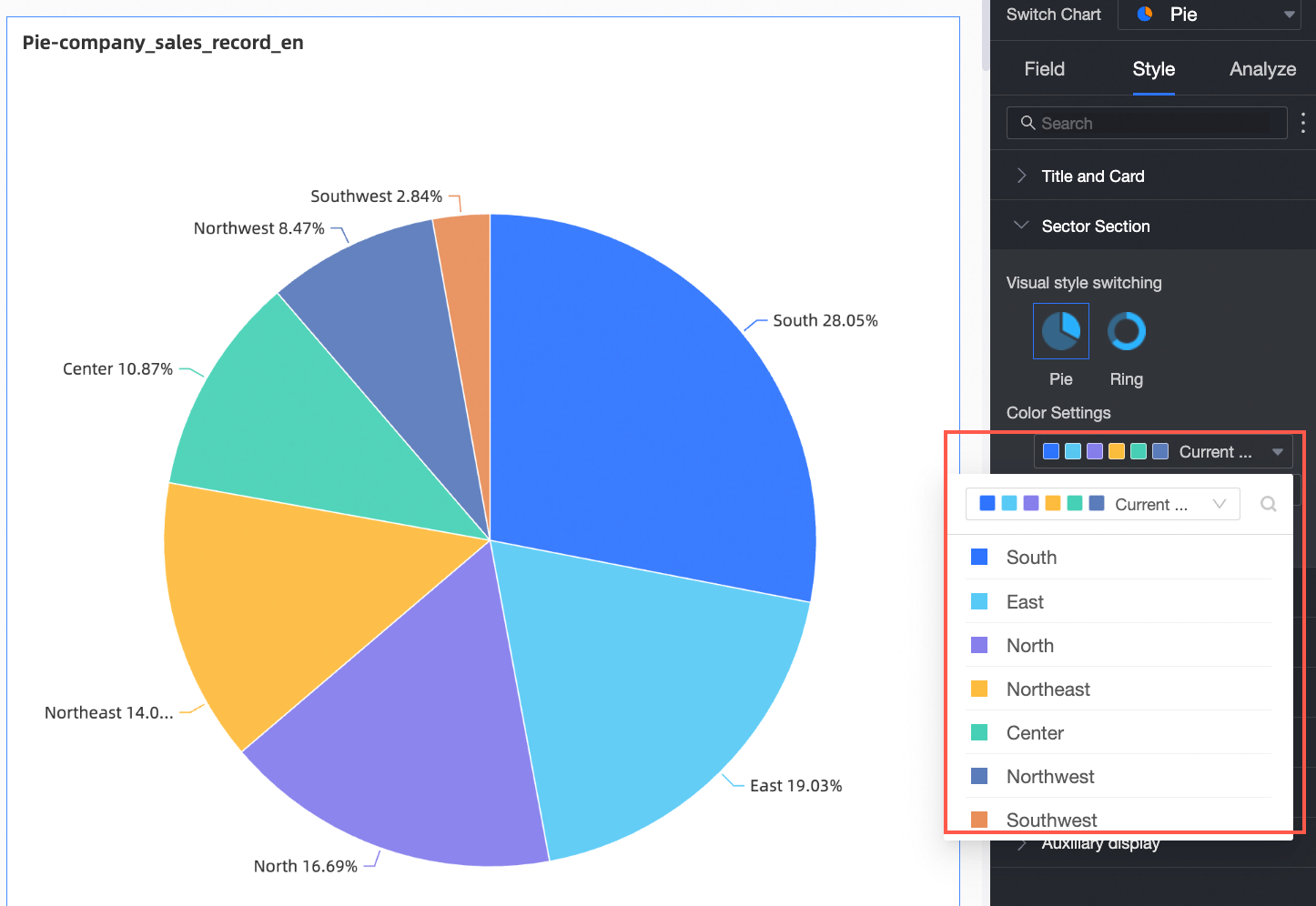
Radius Percentage
Set the radius percentage of the pie chart.

Merge Data into Others
If you select Merge Data into Others Category and configure the number of sectors to 3, the label of the fourth sector is displayed as Others.
Move the pointer over another slice of the pie chart to view the merged content.
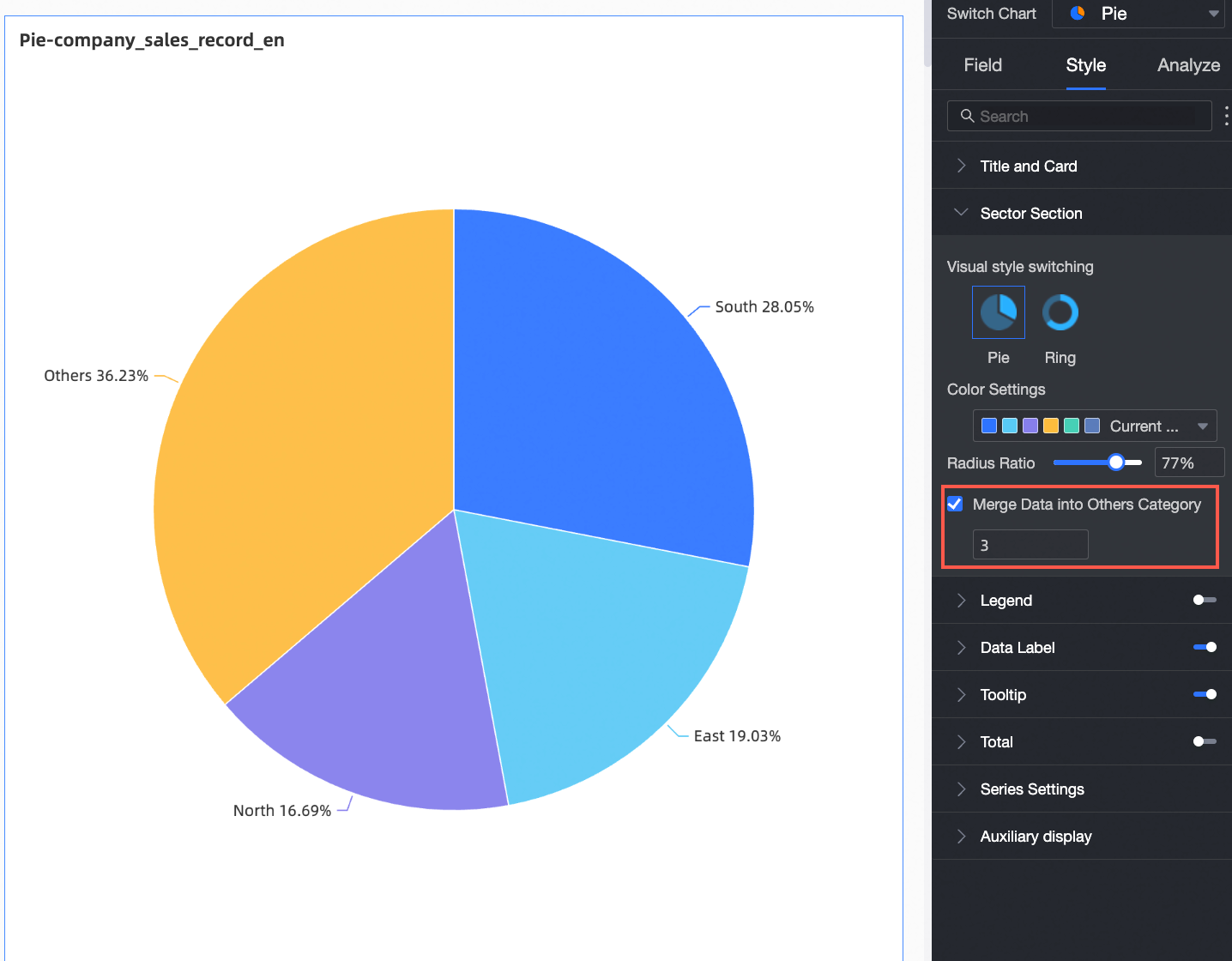
In the Legend section, specify whether to show the legend and the legend style.
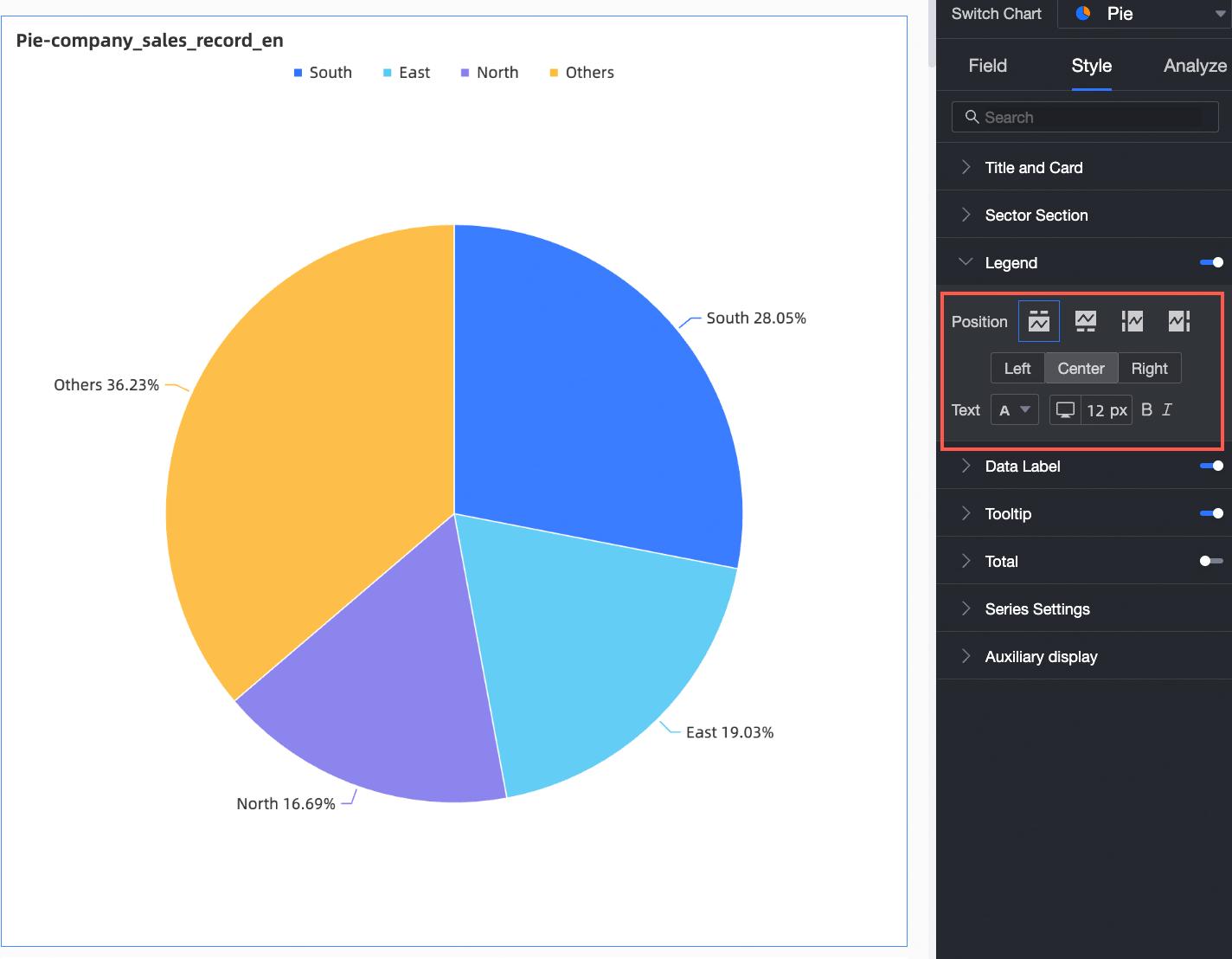
Chart configuration items
Descriptions of parameters
Position
Set the legend display position. The following four legend rendering methods are supported.

Text
Sets the legend text style.
In the label, set whether to display the label and the label style.
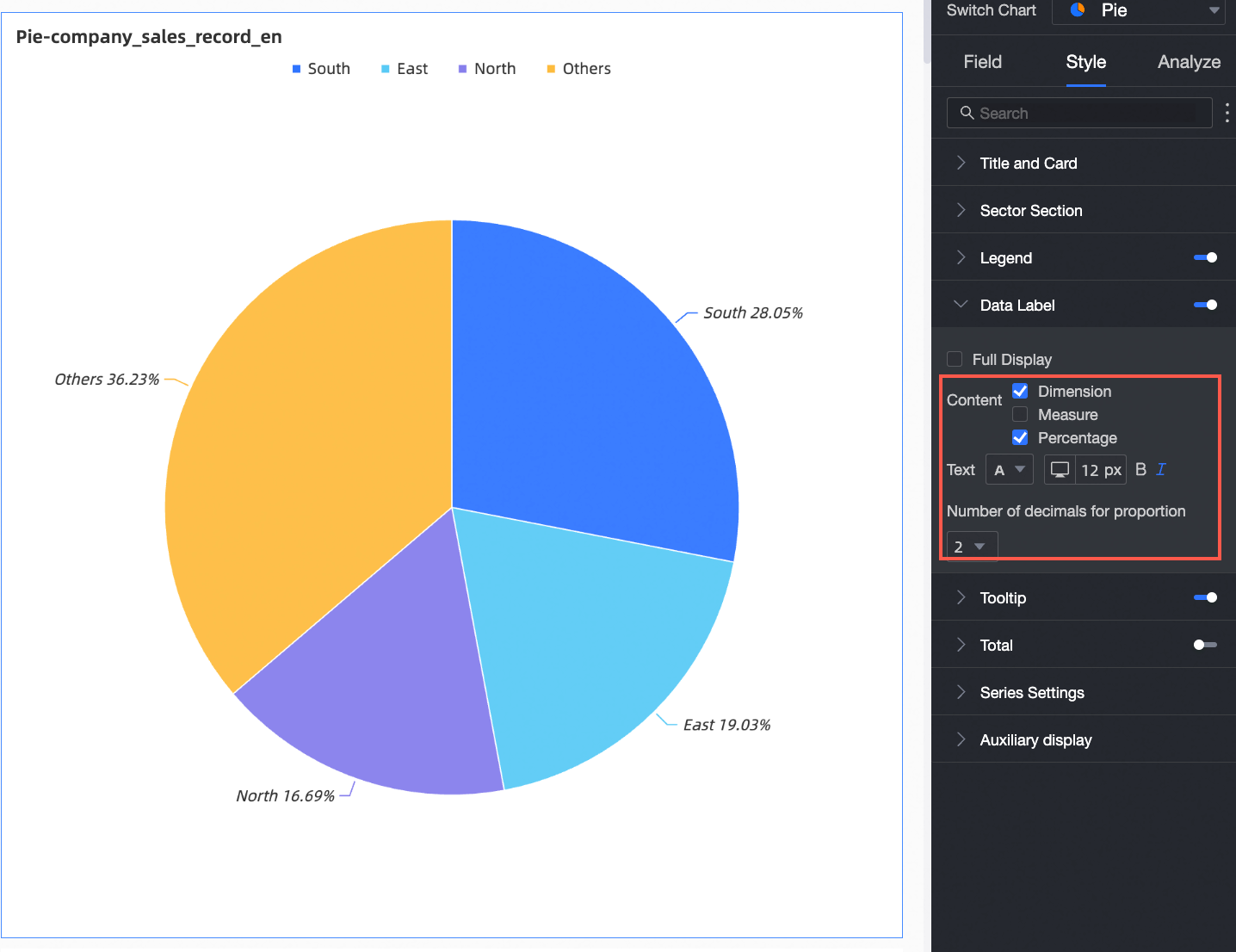
Chart configuration items
Descriptions of parameters
Full Display
Set whether to display full label.
Description
Specify the display content of the label. You can select Dimensions, Measures, and Percentages.
Position
Set the label display position.
Text
Sets the label text style.
In the Tooltip section, configure the tooltip mode.
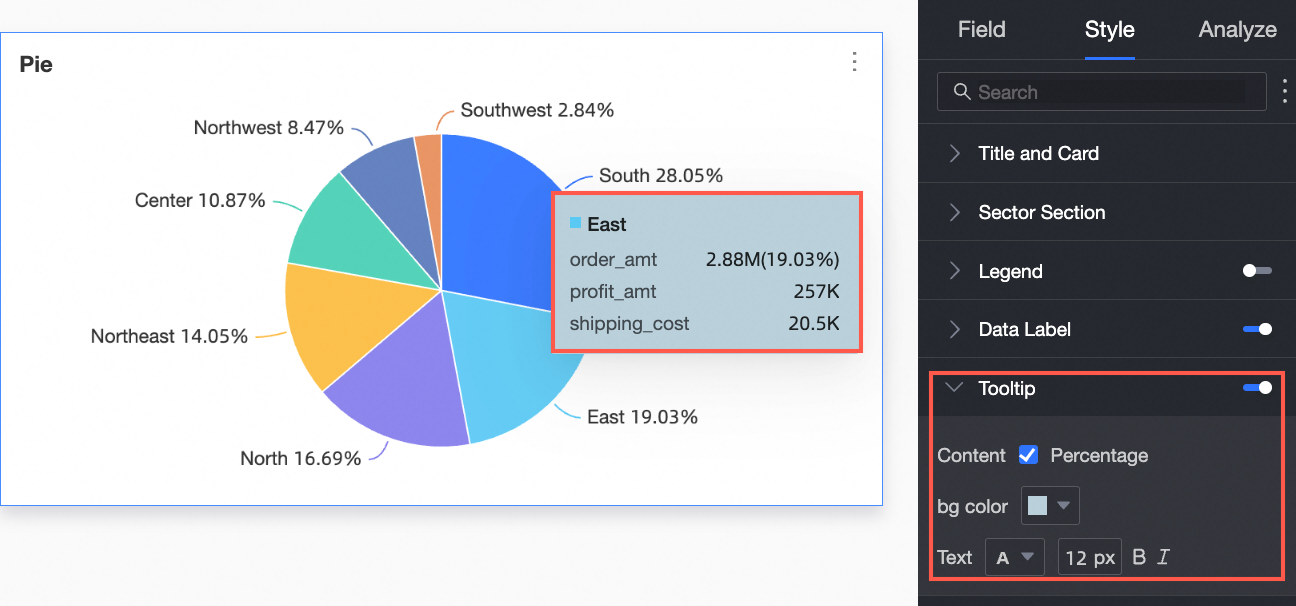
Chart configuration items
Descriptions of parameters
Description
Specify whether to display the percentage information.
Background color
Set the background color.
Text
Sets the prompt text style.
In the Total section, specify whether to display the total content.
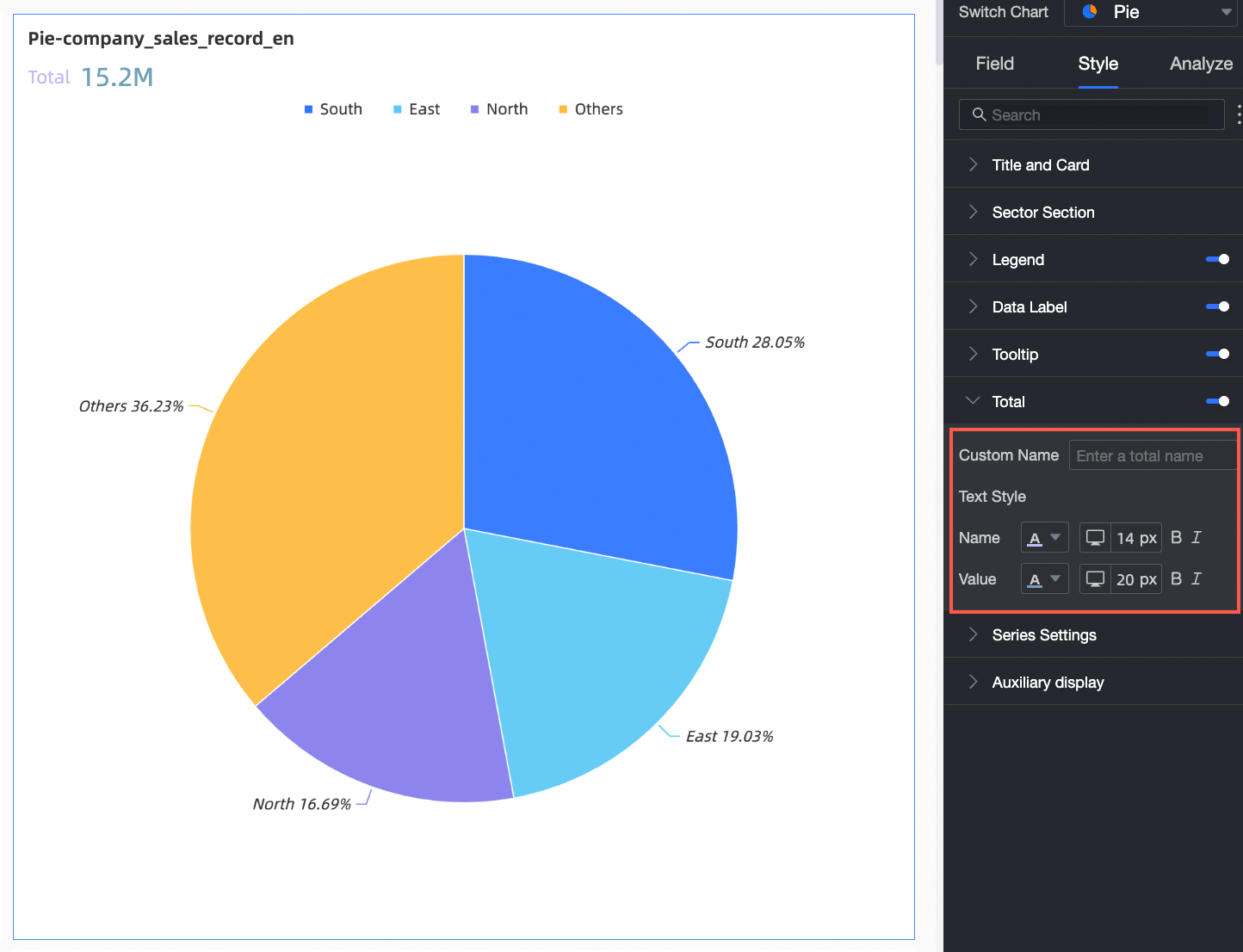
Chart configuration items
Descriptions of parameters
Custom Name
You can customize the name of the total.
Text Style
Sets the style for text names and text values.
In the Series Settings section, configure the series. The following table describes the parameters.
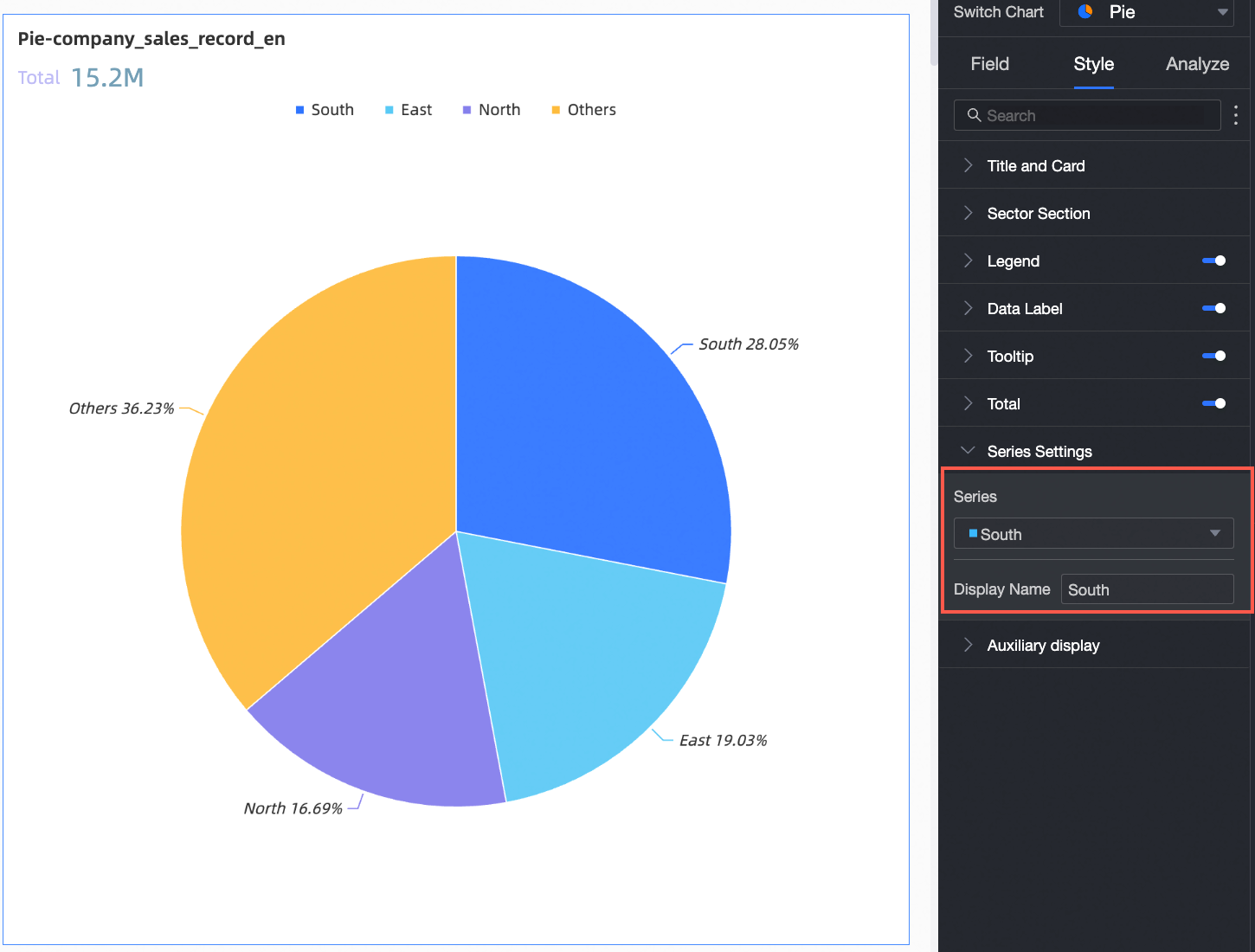 Note
NoteYou must configure Display Name and Number Formatting in the Series Settings section only if Color Legend (Dim.) is used.
Chart configuration items
Descriptions of parameters
Series
The series. You can specify a measure or dimension based on your business requirements.
Alias
Allows you to set aliases for series names.
In the Auxiliary Display section, set the filter parameters.

Chart configuration items
Descriptions of parameters
Enable metric filtering
Specify whether to enable this parameter. After you enable this parameter, the default metric field is selected.
Chart analysis configuration
Parameter | Field | Description |
Data interaction | Drill | If you have set the drill-through field in the Fields panel, you can set the drill-level row display style here |
Linkage | If the data that you want to analyze exists in different charts, you can click the Edit icon next to Linkage and configure the parameters in the Filter Interaction dialog box. Charts can be associated for data analysis. For more information, see the "Configure the filter interaction feature" section in Drilling, filter interaction, and hyperlink. | |
Hyperlink | If the data that you want to analyze exists in different dashboards, you can click the Edit icon next to Hyperlink and configure the parameters in the Hyperlink dialog box. Dashboards can be associated for data analysis. You can set the Hyperlink parameter to Parameter or External Link. For more information, see Drilling, filter interaction, and hyperlink. | |
Tag the data | You can use icons, background colors, and highlighted measures as labels to mark a specific part of a chart. For more information, see Label. | |
Limits
Take note of the following limits when you add data to a pie chart:
You can specify 1 to 10 measures for Central Angle (Mea.).
You can specify only one dimension for Labels (Dim.).
Delete a pie chart
If you want to delete a chart, follow the instructions shown in the following figure.
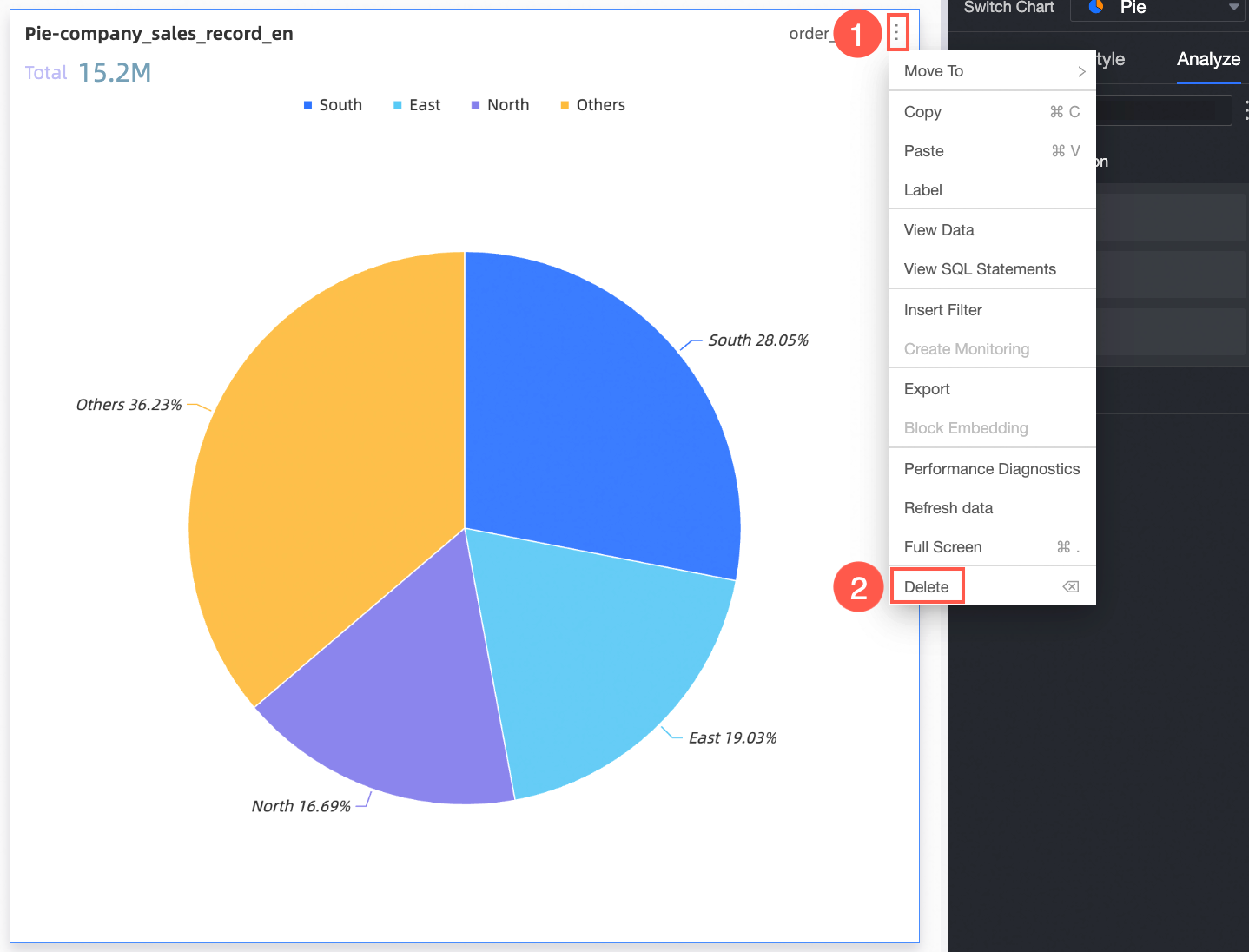
What to do next
You can share a dashboard with specific users if they want to view the dashboard. For more information, see Share a dashboard.
If you want to create a complex navigation menu for thematic analysis, you can integrate the dashboard that you create into a business intelligence (BI) portal. For more information, see Create a BI portal.